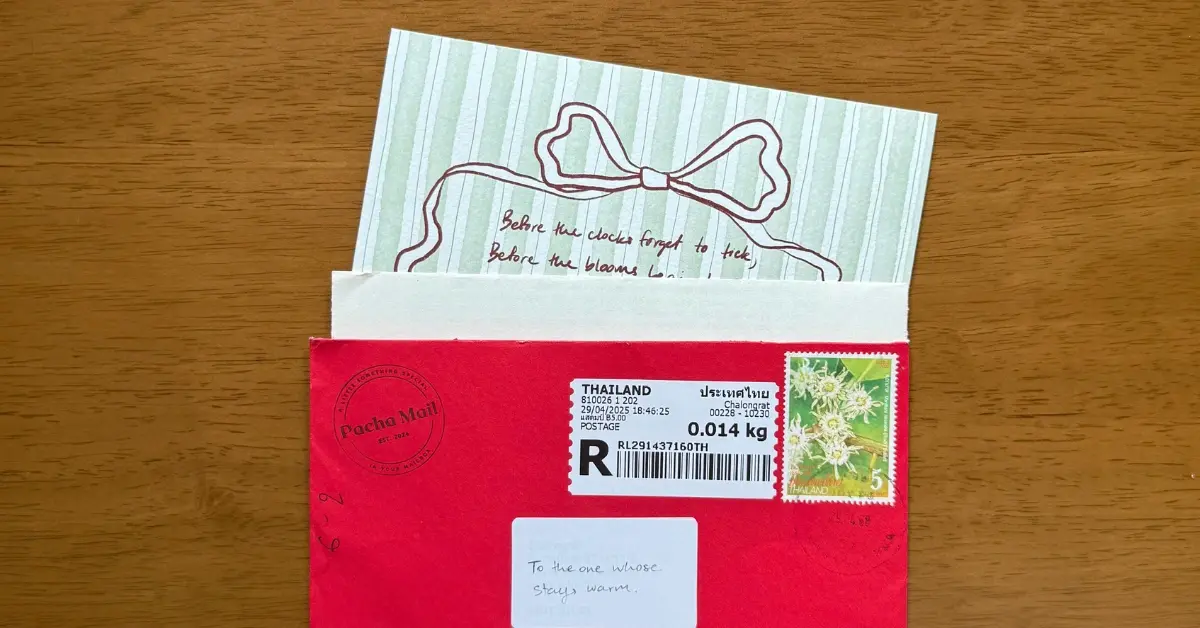Introduction
In our fast-paced digital age, the art of letter writing has become a cherished rarity. While instant messaging and social media keep us connected, they often lack the depth and personal touch that a handwritten letter offers. Writing a letter to a friend is more than just putting words on paper; it's an intimate gesture that conveys thoughtfulness, care, and a desire to connect on a deeper level. At Pacha.mail, we believe in the power of letters to foster deep connections. Learn more about our mission and values.
Discover the history of letter writing and its enduring significance in personal communication.
This comprehensive guide will walk you through the process of writing a meaningful letter to a friend, from crafting the perfect opening to adding personal touches that make your message unforgettable.
Table of Contents
- Why Write a Letter to a Friend?
- Gathering Your Materials
- Choosing the Right Tone
- Structuring Your Letter
- Starting with a Warm Greeting
- Sharing Personal Updates
- Expressing Gratitude and Appreciation
- Including Shared Memories
- Asking Thoughtful Questions
- Closing with Heartfelt Sentiments
- Adding Personal Touches
- Addressing and Sending Your Letter
- Tips for Maintaining Correspondence
- Sample Letter to a Friend
- Conclusion
1. Why Write a Letter to a Friend?
Writing a letter to a friend allows for a deeper level of communication that digital platforms often can't provide. It's a tangible expression of your thoughts and feelings, offering a sense of closeness and sincerity. A letter can be kept, reread, and cherished, serving as a lasting reminder of your friendship.
2. Gathering Your Materials
Before you begin, gather the necessary materials:
-
Stationery: Choose paper that reflects your personality or the tone of your message.
-
Writing Instrument: A reliable pen or pencil.
-
Envelope and Stamp: Ensure you have the correct postage for your letter's destination.
3. Choosing the Right Tone
Consider the nature of your relationship and the purpose of your letter. Is it casual, formal, or somewhere in between? Your tone should reflect your friendship and the message you wish to convey.
4. Structuring Your Letter
A well-structured letter typically includes:
-
Greeting: A warm opening.
-
Body: The main content, including personal updates and shared memories.
-
Closing: A heartfelt conclusion.
-
Signature: Your name or nickname.
5. Starting with a Warm Greeting
Begin with a friendly salutation that suits your relationship:
-
"Dear [Friend's Name],"
-
"Hey [Friend's Name],"
-
"Hi [Friend's Name],"
6. Sharing Personal Updates
Provide insights into your life since you last connected. Share experiences, achievements, challenges, or everyday occurrences that you'd like your friend to know about.
7. Expressing Gratitude and Appreciation
Let your friend know how much they mean to you. Expressing gratitude strengthens your bond and shows that you value their presence in your life.
8. Including Shared Memories
Recounting shared experiences can evoke nostalgia and reinforce your connection. Mentioning specific events or inside jokes can bring a smile to your friend's face. For inspiration, explore famous letter poems that beautifully capture personal sentiments.
9. Asking Thoughtful Questions
Engage your friend by asking about their life. Inquire about their well-being, recent activities, or plans. This encourages a two-way conversation and shows genuine interest.
10. Closing with Heartfelt Sentiments
Conclude your letter with a warm closing that reflects your feelings:
-
"With love,"
-
"Yours truly,"
-
"Warm regards,"
11. Adding Personal Touches
Enhance your letter with personal elements:
-
Drawings or Doodles: Add a creative flair.
-
Photographs: Include a picture that holds significance.
-
Pressed Flowers: A natural touch that adds charm.
12. Addressing and Sending Your Letter
Ensure the envelope is correctly addressed:
-
Recipient's Name and Address: Centered on the envelope.
-
Your Return Address: Top left corner.
-
Postage Stamp: Top right corner.
Ensure proper mailing by following USPS guidelines on sending letters. Drop your letter in a mailbox or take it to the post office for mailing.
13. Tips for Maintaining Correspondence
Set Reminders: Schedule regular times to write.
Keep a Correspondence Journal: Note topics discussed to avoid repetition.
Be Patient: Understand that replies may take time.
14. Sample Letter to a Friend
Dear Alex,
I hope this letter finds you well. It's been a while since we last caught up, and I wanted to share some updates from my end. Work has been hectic, but I recently started a painting class that's been incredibly fulfilling.
Remember our trip to the mountains last year? I came across some photos and couldn't help but smile at the memories. Those were truly special moments.
How have you been? I'd love to hear about what's new in your life.
Looking forward to your reply.
Warm regards,
Jamie
Conclusion
Writing a letter to a friend is a meaningful way to express your thoughts and emotions. It's a practice that fosters deeper connections and creates lasting memories. So, take a moment, pick up a pen, and let your words bridge the distance.
If you're inspired to send heartfelt messages regularly, explore our subscription options to make letter writing a monthly ritual.
